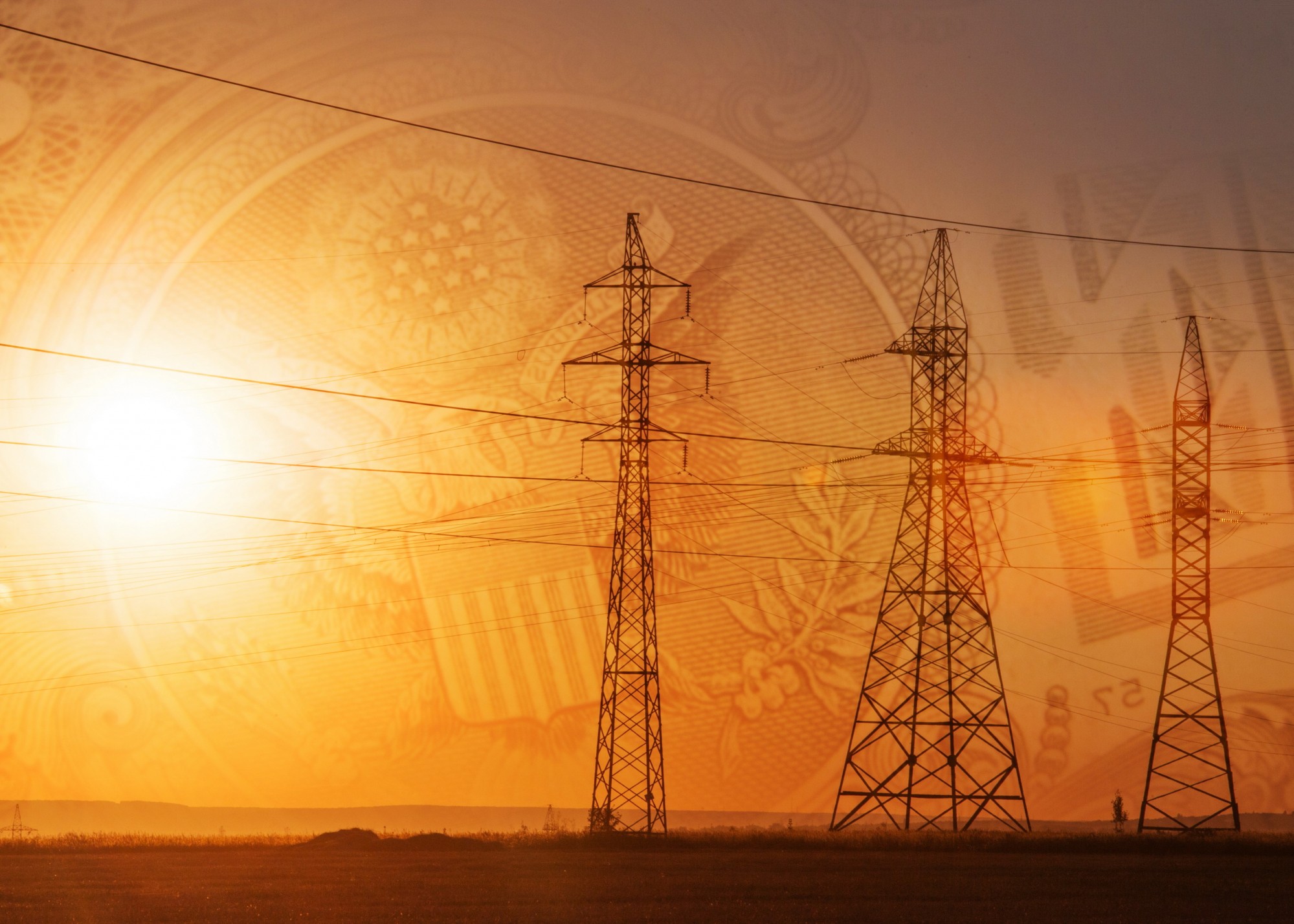Distributed Energy Resources, Regulation, Utilities - September 25, 2024 - By Amazon Science
Five Ways Amazon is Helping Modernize the U.S. Power Grid
Power grids form the backbone of the U.S. electric system, responsible for balancing electricity supply and demand while delivering power to homes and businesses. This complex system is undergoing a massive transformation driven by an evolving energy landscape. The onshoring of manufacturing, electrification of transportation, and expansion of digital infrastructure are fueling a surge in electricity demand, while the country is simultaneously transitioning toward a more sustainable energy future. This confluence of factors presents an opportunity to harness the significant growth of carbon-free energy to meet increasing demand. However, to fully capitalize on this opportunity, the U.S. will need a modernized and expanded power grid capable of quickly connecting, transmitting, and managing carbon-free energy.
Most of the U.S. power grid was constructed in the 1960s and 1970s, and about 70% of transmission lines are more than 25 years old. The grid was originally built for electricity flow from a centralized asset, not from distributed carbon-free sources like solar and wind farms. And the interconnection process, which is how new sources of energy (like wind and solar farms) connect to the grid, was not designed to support the large volume of projects being built today. This means that projects that can be constructed and operational within 18 months could take up to five years to actually connect to the grid, preventing new carbon-free energy from getting to American consumers and businesses.
The good news is that, by leveraging advanced technologies like smart meters and battery storage and implementing policies that enable rapid modernization, we can realize the benefits of a modernized power grid built on low-carbon or carbon-free power sources more quickly. Amazon is taking tangible steps to support these efforts, including innovating across the energy sector to bring new carbon-free power sources forward, encouraging investment in grid modernization technologies, and urging policymakers across the country to implement policies to accelerate grid modernization efforts.
Here are five ways Amazon is helping modernize the U.S. power grid:
1. Accelerating energy innovation
Amazon recently announced that it has matched all of the electricity consumed across its operations with 100% renewable energy, with investments that have enabled more than 28 gigawatts (GW) of solar and wind energy capacity across more than 500 projects. Amazon is also using grid modernization technologies that can help to stabilize the power grid and optimize carbon-free energy generation.
For example, at Baldy Mesa, a California solar and battery storage project enabled by Amazon, machine learning (ML) models powered by Amazon Web Services (AWS) are helping predict when and how the project’s battery unit should charge and discharge energy back to the grid. Pairing solar and battery projects with AI technologies helps to ensure that the grid, and the customers it serves, have access to a steady supply of carbon-free energy for more hours each day, while also helping alleviate grid congestion during peak hours.
Amazon is also entering into unique collaborative agreements to develop new tariffs and approaches to powering our operations with carbon-free energy. For example, Amazon, Duke Energy, and other companies recently announced an agreement to explore innovative approaches to supporting carbon-free energy generation.
2. Supporting broad deployment of grid-enhancing technologies (GETs)
Grid-enhancing technologies (GETs) are like upgrades for an aging computer: they can boost performance and extend capabilities without requiring the replacement or rebuilding of physical assets. These technologies are hardware and software solutions that can be added to the existing power grid to make it smarter and increase capacity, flexibility, and resiliency, which helps relieve congestion and avoid increased costs for ratepayers. Also, GETs can be implemented much more quickly than traditional transmission infrastructure upgrades, such as building new transmission lines or substations.
Amazon worked with RMI, an independent nonprofit organization that aims to transform global energy systems, on a study that found that GETs could help interconnect 6.6 GW of carbon-free energy generation across Illinois, Indiana, Ohio, Pennsylvania, and Virginia by 2027. That’s enough electricity to power more than four million U.S. homes. Amazon supports the broad deployment of GETs and is urging policymakers and energy providers like BPA to take action to spur more GETs deployment in their jurisdictions. The Federal Energy Regulatory Commission’s (FERC) Order No. 1920, which Amazon advocated for, is a step in the right direction, as it requires GETs to be considered during transmission planning. But greater GETs deployment is needed to quickly expand the capacity of, and integrate more carbon-free energy into, the existing U.S. power grid.
3. Encouraging investment in grid modernization technologies through modernized carbon accounting
Grid modernization technologies help to improve the resiliency, stability, and efficiency of the power grid and can also help to optimize the integration of distributed energy sources. However, greater investment in grid modernization technologies is needed, and refreshed carbon accounting standards that measure the impact of avoided emissions could accelerate it. While the Greenhouse Gas Protocol, the most commonly used carbon-accounting standard, has helped encourage companies to enable new carbon-free energy projects, it does not at present account for emissions avoided from grid modernization technologies.
Amazon cofounded the Emissions First Partnership (EFP), which advocates for carbon accounting that more precisely measures the emissions impact of a company’s energy consumption and generation. For example, in California, Amazon has enabled 470 megawatts (MW) of solar and battery storage projects on the grid. If these projects were only solar, they would avoid roughly 26,800 tons of emissions annually. By adding battery systems, these same projects avoid approximately 75,600 tons of emissions annually—showing that the battery storage technology enabled a nearly threefold increase in avoided emissions. EFP is encouraging a modernized accounting standard that measures the proven impact of these avoided emissions, which, in turn, encourages greater investment in grid modernization technologies.
4. Modernizing through cloud
As the U.S. power grid evolves to accommodate carbon-free energy sources, many utilities are turning to cloud computing services and capabilities like advanced analytics and machine learning to aid in modernization. For example, Duke Energy, which operates one of the largest energy grids in the U.S., is using AWS to run its Intelligent Grid Services applications, which analyze massive datasets dealing with electricity demand, energy efficiency, distributed energy resources, and electric-vehicle (EV) adoption. Processing this data on AWS allows Duke Energy to forecast future needs and modernize the power grid to improve resiliency, integrate carbon-free energy sources, and prepare for widespread adoption of EVs.
GridUnity, a technology provider for the utilities industry, announced an agreement with Southwest Power Pool (SPP), the regional grid operator serving the central U.S., to develop an interconnection lifecycle management solution, running on AWS, that reduces delays in reviewing interconnection requests. This accelerates the interconnection process and helps to address the current backlog of projects awaiting grid connection; it also makes it easier for transmission providers to plan for rapid transformation of the power grid.
5. Advocating for grid modernization reform
Amazon advocates for reform and works with energy regulators and policymakers to drive policies that encourage grid operators to take a more forward-looking approach and consider a wide range of transmission needs, including the needs that are coming from industry and state carbon-free-energy goals. For example, Amazon supports FERC’s recent Orders 1920 and 2023, which aim to modernize the power grid and make carbon-free energy more widely available. Order No. 1920 requires long-term planning for regional transmission and accounting for carbon-free energy goals, while Order No. 2023 helps to reduce delays in the interconnection process. These orders will improve overall transmission planning and make it easier to quickly connect new carbon-free energy to the power grid.
Across the U.S., many state legislatures and public-utilities commissions have goals of increasing carbon-free-energy availability and reducing costs to ratepayers. Amazon is aligned with these goals and provides input on policies and regulations affecting transmission build-out, interconnection rules, and carbon-free-energy procurement. For example, Amazon supports Pacific Northwest energy provider Bonneville Power Administration’s (BPA) work to reform the interconnection process. In Oregon, Amazon supports House Bill 4015, which aims to accelerate the deployment of standalone battery storage systems that play a key role in addressing the variability of wind and solar energy. Amazon also supports Virginia’s House Bill 862, which requires utilities to consider GETs as part of their long-term resource planning.
These are just some of the ways that Amazon is working to help support grid modernization efforts. By taking these important steps, we can ensure that we're prepared to support the emerging energy needs of today and tomorrow. Learn more here.
This column originally appeared on Amazon's website.
Science at Amazon enables new customer experiences, addresses existing customer pain points, complements engineering and product disciplines, and is a critical functional skill for all Amazon businesses. It is this focus on the customer, and the company’s ability to have an impact at global scale that attracts some of the brightest minds in artificial intelligence, machine learning, and related fields.
Share this valuable information with your colleagues using the buttons below:
« Back to ColumnsStay Up-To-Date












